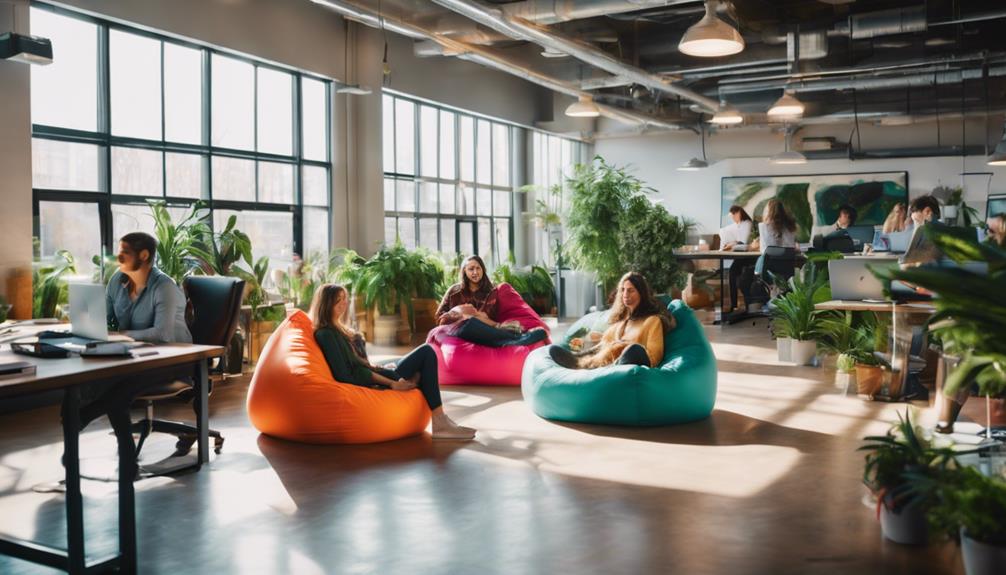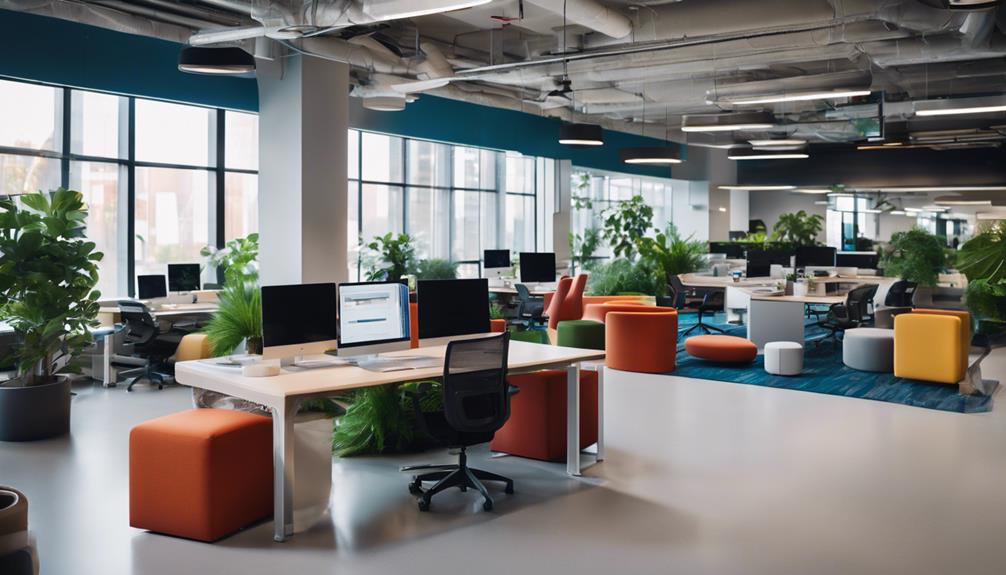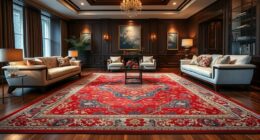You're seeing a major shift in workspaces as the cubicle revolution redefines office life. From their origins in the 1960s, cubicles aimed to provide privacy in otherwise open environments. However, as employees now seek more interaction and flexibility, traditional cubicle farms are falling out of favor. Modern designs focus on adjustable, customizable setups that promote comfort and collaborative work. Features like noise-canceling walls and biophilic elements cater to diverse needs, ensuring that productivity flourishes. This evolution reflects a deeper understanding of employee well-being, leading to a more engaging workspace. There's so much more to uncover about how this transformation unfolds.
Historical Roots of Cubicles
Cubicles, as we perceive them today, have their roots in the focused workspaces of Medieval monasteries, evolving considerably over centuries to meet the needs of modern office environments.
In the 1400s, monks utilized secluded areas for contemplation and writing, creating a model for privacy and concentration. Fast forward to the Industrial Revolution, and you see early office buildings featuring separate rooms for workers.
The 1900s brought about large open spaces filled with rows of desks, which lacked the necessary privacy. It wasn't until the 1960s that Robert Propst introduced cubicles through his Action Office design, aiming to enhance both individual focus and collaboration.
This marked a significant shift away from traditional office layouts, paving the way for today's cubicle structures.
The Cubicle Farm Phenomenon
The rise of cubicle farms in the 1970s reshaped office environments, providing a cost-effective solution for businesses seeking to maximize productivity while giving workers a sense of privacy.
These cubicle farms became popular for several reasons:
- Cost Efficiency: Businesses could fit more employees into smaller spaces, reducing overhead costs.
- Employee Privacy: Despite being in an open space, cubicles offered a semblance of personal space, which many workers appreciated.
- Structured Environment: Cubicles helped establish a sense of order and organization in otherwise chaotic work settings.
However, as time went on, the downsides of these environments became evident, leading to widespread dissatisfaction among employees.
Understanding both the benefits and drawbacks of cubicle farms is essential as we continue to evolve workplace designs.
Decline of Traditional Cubicles
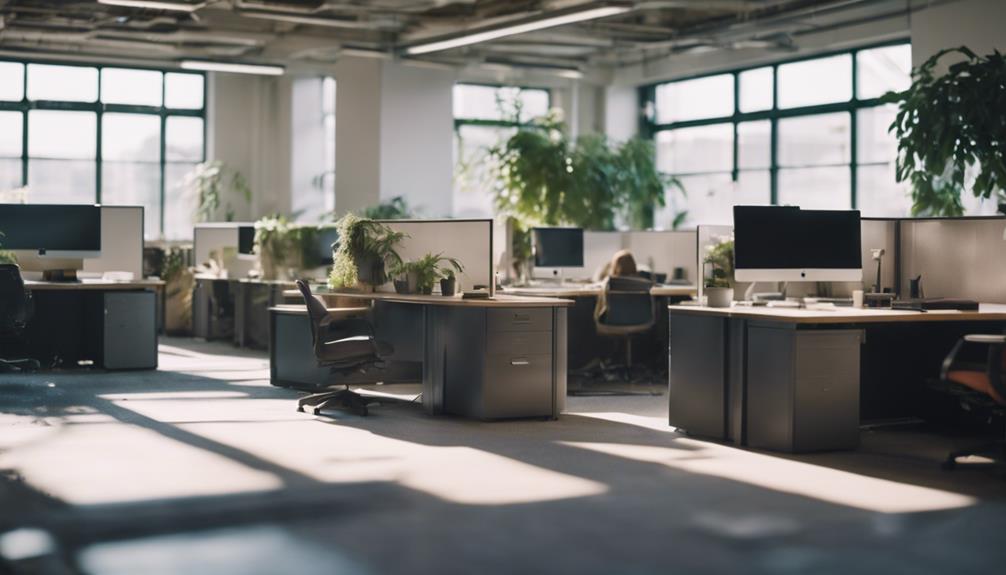
Over the years, traditional cubicles have fallen out of favor as employees increasingly seek more dynamic and collaborative work environments.
You might've noticed that the once-popular cubicle farms often feel stifling and isolating. Many workers express dissatisfaction with the lack of privacy and the noise distractions that come with these designs.
As companies prioritize employee well-being, the rigid structures of traditional cubicles are being replaced by open spaces and flexible layouts. This shift acknowledges your desire for social interaction and creativity in the workplace.
The decline of cubicles reflects a broader understanding that modern work requires adaptability and collaboration, encouraging organizations to rethink how they design their spaces to foster a more engaged and productive workforce.
Modern Design Innovations
Modern design innovations frequently prioritize flexibility and employee comfort, transforming traditional workspaces into dynamic environments that foster collaboration and productivity.
You'll notice that today's cubicles aren't just about partitions; they're about creating spaces that adapt to your needs. Here are three key features driving this change:
- Adjustable Furniture: Desks and seating can be modified for height and comfort, allowing you to switch between sitting and standing.
- Noise-Canceling Solutions: Incorporating sound-absorbing materials helps reduce distractions, enhancing your focus.
- Customizable Layouts: Modular designs let you reconfigure your workspace easily, promoting both collaboration and individual productivity.
These innovations reflect a shift towards prioritizing your well-being and efficiency in modern workplaces.
Flexibility in Workspace Solutions
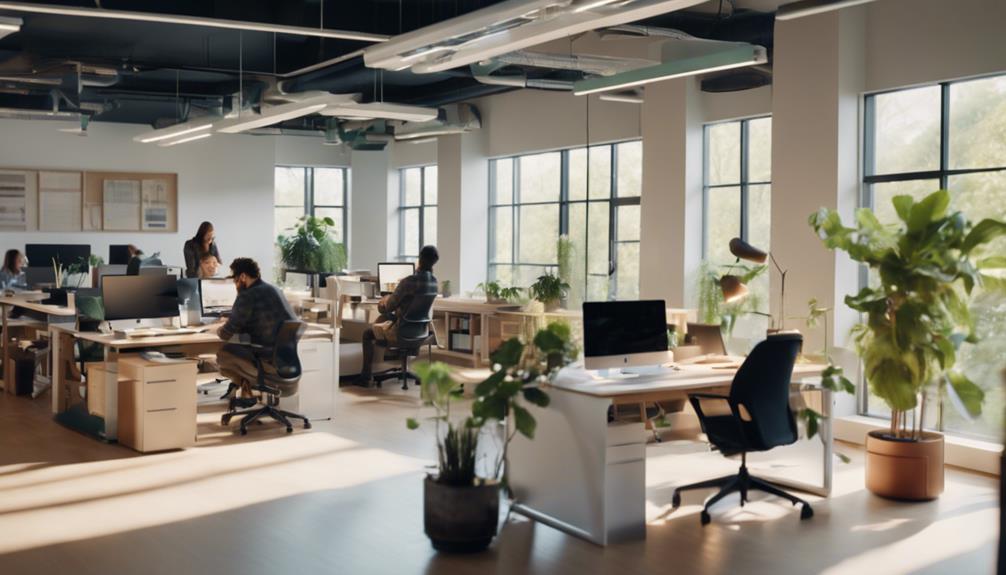
Flexibility in workspace solutions empowers you to create an environment that adapts to your changing needs and preferences. You can configure your space with adjustable partitions and modular furniture, allowing for quick reconfigurations based on tasks or team size.
This adaptability enhances employee comfort and well-being, promoting productivity in ways traditional setups can't. Features like noise-canceling walls and adjustable lighting cater to individual preferences, ensuring everyone finds their ideal work conditions.
As you embrace modern cubicle designs, you'll prioritize autonomy and personalization, leading to increased satisfaction and efficiency. With flexibility at the forefront, your workspace can evolve alongside your team, fostering a dynamic atmosphere where creativity and collaboration thrive.
Embrace this shift for a more engaged workforce.
CORT's Role in Office Evolution
CORT plays a pivotal role in transforming office spaces by providing versatile furniture solutions that adapt to evolving workplace needs.
You'll find their offerings are essential for creating environments that foster productivity and collaboration.
Here are three key advantages of CORT's solutions:
- Flexibility: CORT offers modular furniture that can be reconfigured easily to meet changing demands.
- Innovative Technology: With 4SITE Technology, you can gather occupancy data to optimize workspace usage.
- Employee-Centric Design: Their furniture prioritizes comfort and privacy, enhancing overall well-being in the workplace.
Trends Influencing Future Workspaces
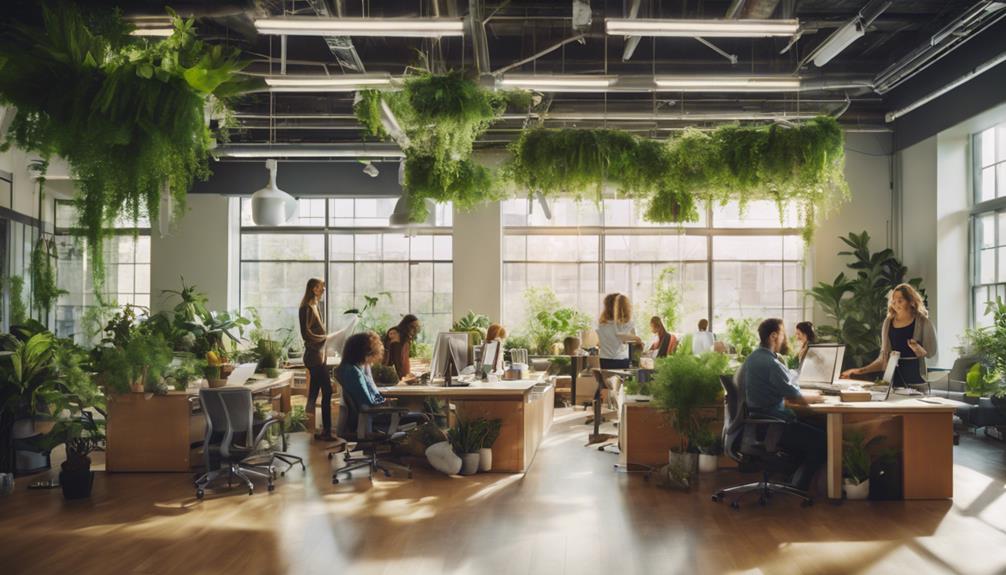
As organizations adapt to changing workforce dynamics, trends are shaping future workspaces to prioritize both collaboration and individual privacy.
You'll see an emphasis on flexible designs that cater to diverse work styles. Modular furniture allows you to reconfigure your workspace easily, promoting both teamwork and focused work.
Additionally, biophilic design elements are becoming popular, connecting you with nature to enhance well-being. Companies are investing in technology that supports remote collaboration, ensuring you stay connected regardless of location.
Furthermore, the integration of wellness features, like adjustable lighting and ergonomic furniture, reflects a commitment to your health.
Ultimately, these trends create environments where you can thrive, blending personal needs with collaborative opportunities.
Frequently Asked Questions
How Do Cubicles Impact Employee Mental Health and Productivity?
Cubicles often create feelings of isolation, negatively impacting your mental health and productivity. When you lack privacy and personalization, focus diminishes, leading to dissatisfaction. Prioritizing adaptable designs can enhance your work experience and overall well-being.
What Are the Environmental Impacts of Cubicle Manufacturing and Disposal?
Cubicles, like silent sentinels, can weigh heavily on the environment. Their manufacturing often involves harmful materials, and disposal contributes to landfill waste, highlighting the urgent need for sustainable practices in office furniture design and lifecycle management.
Are Cubicles Suitable for Remote or Hybrid Work Environments?
Cubicles aren't ideal for remote or hybrid work environments. They can limit collaboration and flexibility, which you need in such settings. Embracing adaptable spaces fosters better communication, productivity, and employee satisfaction in these modern work arrangements.
How Do Cubicles Affect Team Dynamics and Collaboration?
Cubicles can both enhance and hinder team dynamics. They offer privacy for focused work, but may isolate you from colleagues. Balancing personal space with open areas promotes collaboration, fostering a more connected and productive team environment.
What Are the Costs Associated With Implementing Modern Cubicle Designs?
Implementing modern cubicle designs is like upgrading a car's engine; it can be costly. You'll face expenses for furniture, installation, and ongoing adjustments, but investing in employee comfort often pays off with increased productivity and satisfaction.
How Has the Transformation of Workspaces Affected Employee Satisfaction at Boeing?
The transformation of workspaces at Boeing has significantly impacted employee satisfaction. According to the “working at boeing insider guide“, the modern, flexible work environments have fostered collaboration and innovation, leading to increased happiness among employees. Providing a comfortable and inspiring workspace has proven to be a major factor in boosting employee morale and productivity at Boeing.
Conclusion
As you stand on the brink of the cubicle revolution, imagine a workspace that feels like a revitalizing change, invigorating your creativity and productivity.
Embrace the shift towards adaptable designs that prioritize your comfort and collaboration.
You're not just witnessing change; you're part of a movement that transforms isolation into connection.
Let this new era of office design inspire you to thrive, turning every workday into an opportunity for growth and engagement.

